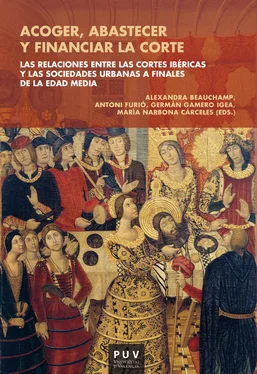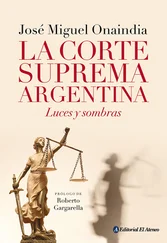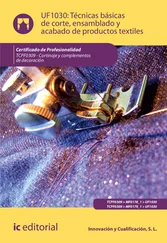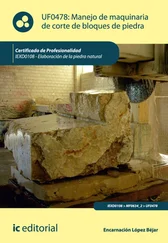The city of Lisbon in the second half of the 1400s preferred to contract with local providers the furnishings and the «bed» services instead of enforcing the obligation of having those who were subject to the vexing duty of the aposentadoria receive the members of the court in their own houses. The commercial service was designated by the end of the fourteenth century as an estau : a half- estau ( meio estau ) was composed of five «beds», and a full estau corresponded to ten units. The «bed» encompassed a full set of material furnishings: not only bed covers and bed sheets, but also a bench and table to sit, and cooking utensils, similarly to what was provided in other forms of paid lodging by the commercial inns.
Using a system of purveyance contracts, since at least the decade of 1460s the main cities of royal itineraries in the Portuguese kingdom – Lisbon, Évora, and also the port-city of Setúbal – would have recourse to professional innkeepers for the bulk of court lodgings 18. The surviving contracts suggest that the solution found in Lisbon was replicated in the other main places of courtly settling. This system required active collaboration between the aposentador or furrier of the court and the local municipal governments. The contracts establish that the supplier had be warned in advance of a fortnight to a month, so the city was to be provided by the court official with a rough estimate of how many people it would have to lodge. Since inevitable fluctuations would occur between the estimate and the reality in the terrain, the municipalities should have, simultaneously, a list of people who were obligated to the aposentadoria , so that in last resort (and it is unclear how frequently this was done in the late 1400s in each of those cities) the members of the court or moradores would be lodging in private houses.
But the originality of the solution found in Lisbon also had a physical impact in the city, dating from the reign of king Duarte (r.1433-1438). The king’s initiative lead to the construction of a special building as the centralized location where such lodging services could take place: the appropriately named Paço dos Estaus . Finished after 1438 during the regency of Pedro, Duke of Coimbra, this imposing building located in a main square next to the city walls ( Rossio ) became a well-known monument of Lisbon, often mentioned in contemporary descriptions and travel narratives. The influence of Duke Pedro, King Duarte’s brother, is generally mentioned as decisive in the adoption of this solution 19. I would argue that his extensive travels may help explain the initiative, in particular his knowledge of the system of the famous Fondaco dei Tedeschi in Venice. Pedro visited Venice in March 1428 coming from the court of emperor Sigismund of Luxembourg, under which he had fought in Hungary and Romania 20. The inspiration of Venice, in my view, comes not so much from the architecture of the building or its commercial functions as it comes from the fact that it exemplified a regimented purveyance of lodging and hospitality.
As Olivia Remie Constable established in her comparative study of such structures, the specialized facilities of the Italian fondacos were modeled on the Islamic funduk . These were places made to accommodate, but also to regulate and segregate the presence and activity of western merchants in Islamic ports. The Venetian Fondaco dei Tedeschi , for instance, seems to have been closely modelled upon that of Alexandria 21. An important goal of these kinds of structures was to facilitate not only commercial exchange but also its inevitable corollary: taxation. In this regard, the Iberian cities were not in need of Italian inspiration because they were quite familiar with these practices. Constable noted, for instance, that similar buildings were owned in late medieval times by Aragonese and Castilian kings in major commercial cities and ports. Such facilities, she explained, «frequently served as depots where incoming merchants were required to bring their goods for storage, taxation, and sale. Though some royal facilities could also serve as paid hostelries, most of them increasingly focused on the control of the goods, not of the merchants» 22. In Venice, the two aspects were indissociable for no active merchant from beyond the Alps, if he were to engage in trade, could stay in any other place within the city but the Fondaco . No excuses were accepted, such as claiming that one arrived too late and the building was closed 23. Since the thirteenth century, the city of Venice strictly controlled the merchant’s arrival by assigning individual city officers to the task and making compulsory the lodging in the Fondaco , where the trading commodities were recorded both at the moment of the merchant’s admission and at his departure. Taxation was less easily avoided when the control of the trading goods coincided with the compulsory stay of the trader.
By establishing the Paço dos Estaus , the Portuguese monarchs became the proprietors of such an assigned place where, from the decade of 1440s until approximately 1537, lodging was provided to all of those who, as members of the court or hosts of the king, were entitled to have it. The changing uses of this structure in the sixteenth century will not be detailed here, although the complex history of the building is revealing of the city’s transformation, as noted by its use for lodging temporarily the expelled Jewish population in 1496, as the nearby Jewish quarters and synagogues of Lisbon were confiscated by royal order 24. The date of 1537 marks the beginning of the activities of the Inquisition in the building, subsequently to become its Lisbon siege 25. The «royal stables» followed the courtier’s lodgings in this same location, and although built outside the walls, they easily communicated with the Paço dos Estaus through a small city door ( postigo ) 26.
The use of this building allowed for carefully regimented and centralized administration of court lodgings, either paid for by the city or by the king directly, as the case may be. While as the control of the lodging obligations and services was thus facilitated, the integration of the courtier in the city was transformed, his experience becoming ever more similar to the precarious settling of the traveller. The place of activity of court members (but also bureaucrats, notaries, and officers of the royal households), the Paço dos Estaus was also place of hospitality for foreign guests and even, on occasion, a place of residence for the king or members of the royal family in the 1500s. As a residential structure associated with the courtier’s experience of the city, the prevailing use of the Paço dos Estaus fully exemplifies, nonetheless, the logic of separation and internal distinction that the court hierarchies embodied.
What happened to a possible sense of continuity within the court’s dislocation, discussed earlier in this essay? How can we define the peculiar sociability that the courtly order would establish within the main cities of the kingdom? A glimpse of the courtier’s experience using this lodging system is available in the poetry produced in courtly environments of the late fifteenth century, most notably the compositions of João Rodrigues de Castelo Branco. This poet uses a well-established topos of opposition between court and countryside by evoking, as part of the courtier’s miserable experience in the city, the broken table, the fleece-infested sheets, the hunger endured while sharing lodgings with his companions. In these texts, the poet mentions exactly the same material implements described in the lodging contracts of Lisbon or Évora: the bed sheets, the furniture, the cooking utensils 27. A lifelike image by the end of the 1400s, therefore, would be an image of discomfort and unalluring poverty, as the topic motif demanded, an image meant to provoke a knowing smile from those who were part of this world – in fact, the poet’s public. Distinction and separation from the lives of regular city dwellers reinforced the courtly hierarchies, but also set up the conditions for another aspect of life at court: its requirements of well-connected social relations and substantial expenditure.
Читать дальше












